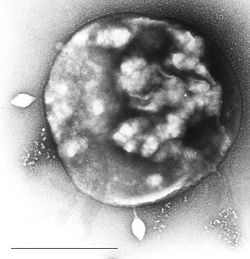| Proteoarchaeota | |
|---|---|
 | |
| Proteoarchaeon Sulfolobus infected with specific virus STSV-1 | |
| Scientific classification | |
| Domain: | Archaea |
| Clade: | Proteoarchaeota Petitjean et al. 2014 |
| Domains, kingdoms and phyla [1] [2] | |
| Synonyms | |
| |
Proteoarchaeota is a proposed archaeal clade thought to be ancestral to the eukaryotes. [3] [4] [a]